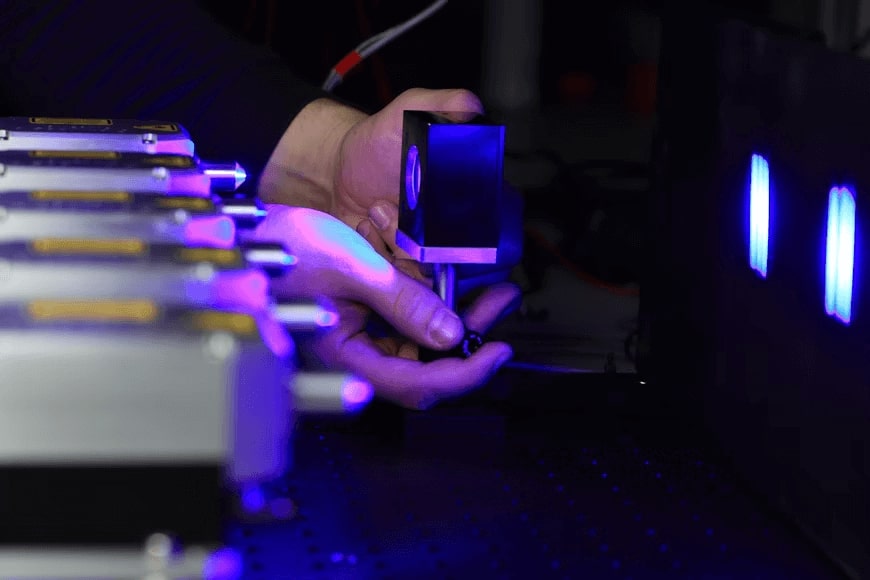
In photonics today, you should expect continued advances in communications and computing technologies. These advances will enable faster data speeds and higher capacity communications systems. In addition, photonics will continue to play a role in improving energy efficiency in a variety of applications.
In the future, you can expect even more advances in photonics as the technology becomes more widely adopted in a variety of industries. With the continued development of new and improved photonics technologies, the future looks bright for this exciting field of study. In this article, you will learn about some of the most exciting advances in photonics that you can expect in the years to come.
What Is Photonics?
Photonics is the study of light and its behavior. It involves the generation, control, and detection of photons, which are particles of light. Photonics has many applications in various fields, including communications, med icine, manufacturing, and defense. In recent years, photonics has become increasingly important due to the rise of optical fiber communications and the development of lasers. Today, phot onics is used in a variety of ways. One of the most common applications is optical fiber communications, which use light to transmit information over long distances. This type of communication is used for long-distance telephone calls, Internet data transmission, and cable television. In addition, photonics is used in medicine for the diagnosis and treatment of diseases. It is also used in manufacturing to create and inspect products. Finally, photonics is used in defense applications such as missile guidance and target identification.
Why Photonics Is So Important Today
Lasers and other photonic devices are used in many different ways that make our lives better. Lasers are used for medical treatments, communications, manufacturing, and many other applications. Also, lasers and other photonics are used in military equipment and systems. The use of Lasers and Photonics has increased exponentially in the past decade, making them one of the most important technologies of our time. This is why photonics is so important today. Though, what can we expect from photonics in the future?
What You Should Expect In The Future
In the future, photonics will continue to play a major role in our lives and in the development of new technologies. Lasers and other photonic devices will become more powerful, more efficient, and more widely available. They will be used in even more diverse applications, including communications, computing, manufacturing, medicine, and security. As photonics technologies advance, they will become smaller, more portable, and more affordable. They will also become more user-friendly, making them accessible to a wider range of users.
Moreover, new photonic devices and applications will be developed that we cannot even imagine today. The future of photonics is very bright indeed. This is why it is important to stay up-to-date on the latest developments in this field so that you can take advantage of the opportunities that will arise. Although, progress in photonics will not always be smooth sailing; there will be challenges and setbacks along the way. But overall, the future of photonics is very exciting and full of potential. So stay tuned for more great things to come.
The Economic Implication Of Photonics
In the business world, photonics is seen as a revolutionary technology with great potential. In fact, it has been called the “next big thing” after the Internet. The reason for all this hype is that photonics has the potential to revolutionize many industries, from communications and computing to healthcare and manufacturing. The potential economic impact of photonics is huge, and it is estimated that the global market for photonics will be worth $1 trillion by 2025.
The application of photonics in communications is perhaps the most well-known and widely used. Fiber optic cables are now used to transmit data all over the world at incredibly fast speeds.
However, there are many other applications of photonics in communications, such as optical networking, which is used to connect different parts of the world with each other.
In the healthcare industry, photonics is being used to develop new diagnostic tools and treatments. For example, lasers are being used to destroy cancerous cells without harming healthy tissue. Additionally, photonics is being used to develop new imaging techniques that can be used to detect diseases such as cancer at an early stage.
In the manufacturing industry, photonics is being used to create more efficient factories. For example, lasers are being used to weld car parts together with great precision. Additionally, photonics is being used to create 3D printing technology that can be used to create products from scratch. All of these applications of photonics have the potential to revolutionize the industries in which they are being used. Consequently, the economic impact of photonics is expected to be significant.

The Impact Of Photonics On The Environment
In addition to the economic implications, photonics also has a significant impact on the environment. The increased use of LEDs, for example, has led to a reduction in greenhouse gas emissions. In fact, the International Energy Agency estimates that the switch to LEDs could lead to a 34% red
Is There Any Adverse Effect Of Photonics?
Photonics is the science of light and its technological applications. It has revolutionized communications, imaging, computing, and sensing technologies. As photonics technologies continue to develop and advance, there is an increasing demand for photonics experts who can design, develop, and implement these technologies. However, with the advancement of photonics technologies comes the potential for adverse effects.
One such effect is the impact on the environment. As photonics technologies become more energy-efficient, they also have the potential to consume less energy and generate less pollution. However, if not properly designed and implemented, photonics technologies can actually increase environmental pollution.
Another potential adverse effect of photonics is its impact on human health. Photonics technologies can emit electromagnetic radiation (EMR) that can be harmful to humans. For example, some lasers used in photonics devices can produce harmful levels of EMR. If not properly shielded, this EMR can cause health problems such as cancer, birth defects, and nerve damage.
In conclusion, the advancement of photonics has led to new opportunities and exciting possibilities for the future. Today, photonics is used in a variety of fields such as communications, medicine, manufacturing, and defense. As the technology continues to evolve, we can expect even more innovative applications of photonics in the years to come. With its vast potential, photonics holds the key to unlocking many of the world’s unsolved mysteries and ushering in a new era of scientific discovery.
